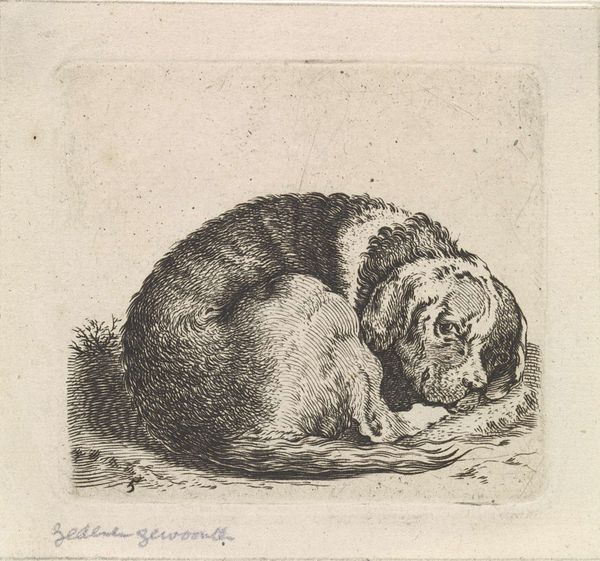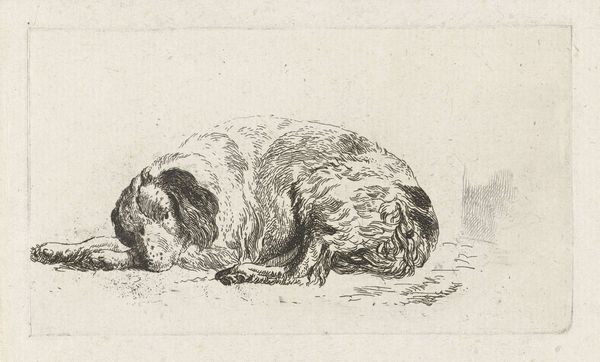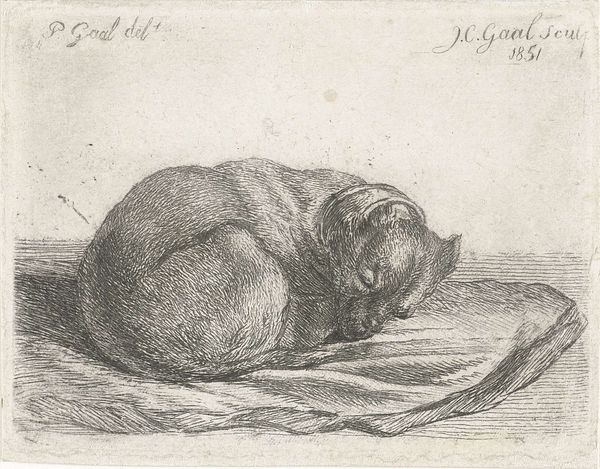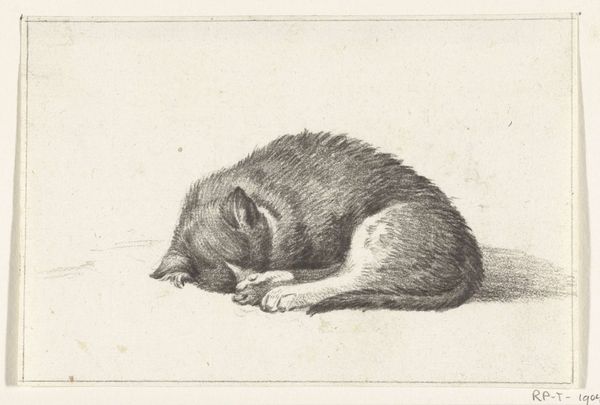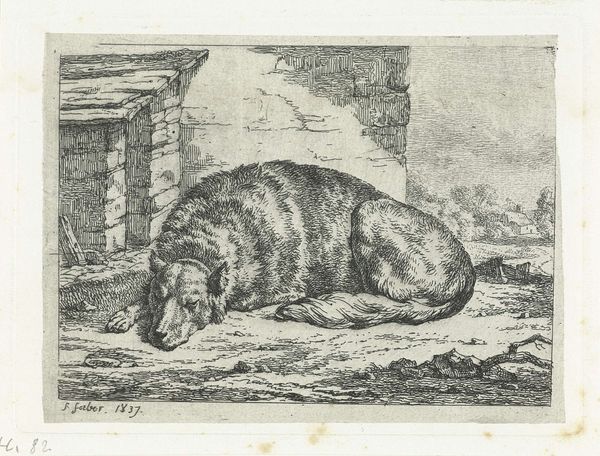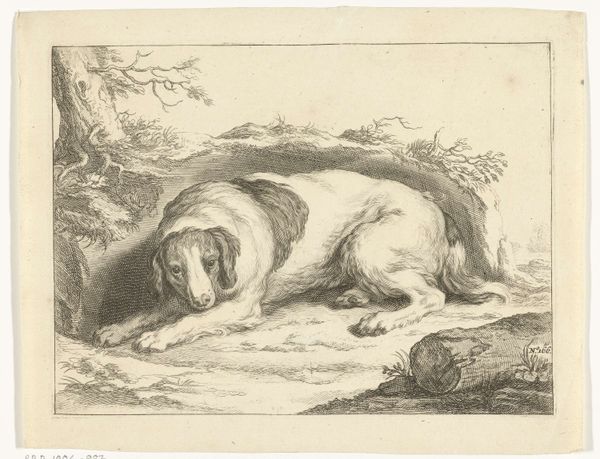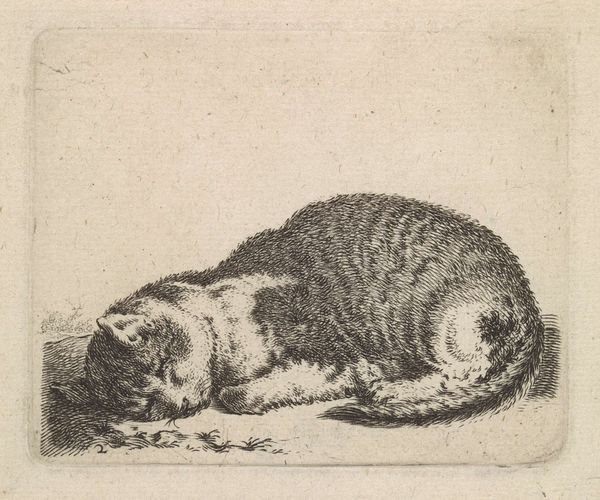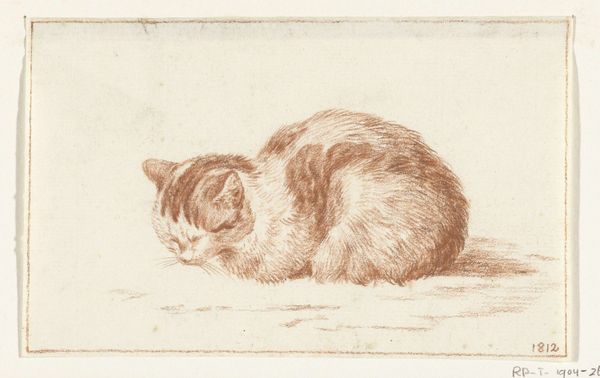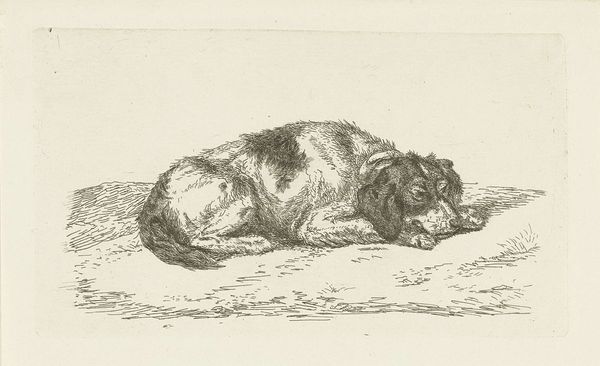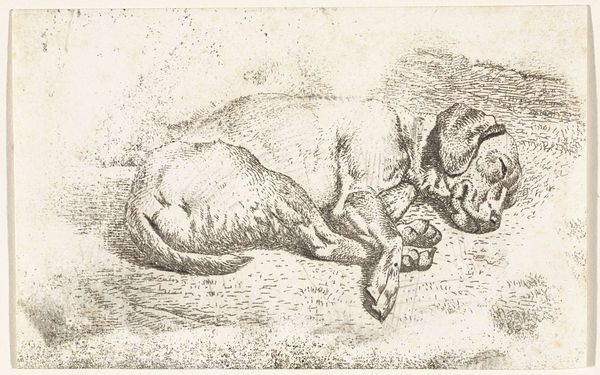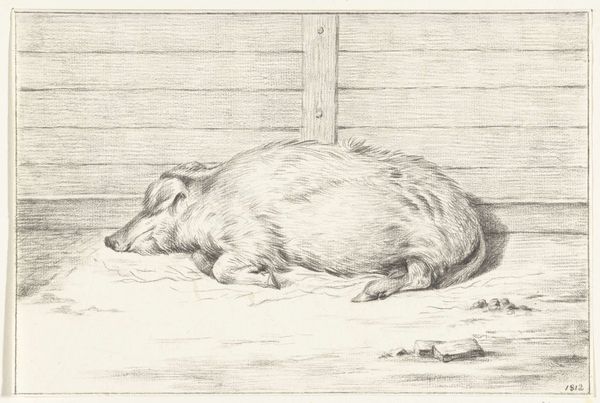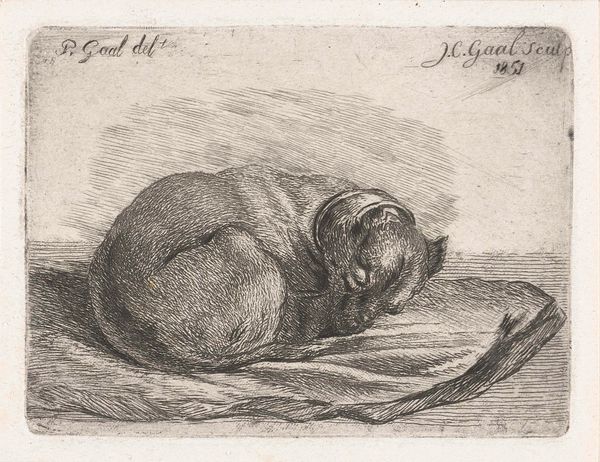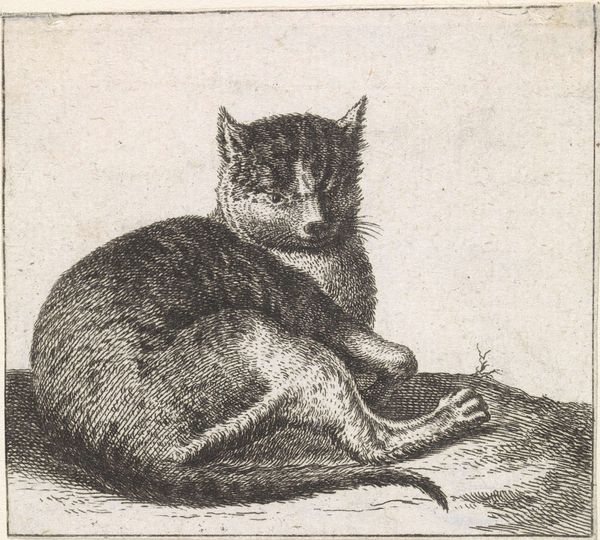
#
pencil drawn
#
amateur sketch
#
light pencil work
#
pen sketch
#
pencil sketch
#
dog
#
personal sketchbook
#
pen-ink sketch
#
sketchbook drawing
#
pencil work
#
sketchbook art
Dimensions: width 81 mm, height 72 mm
Copyright: Rijks Museum: Open Domain
Editor: Here we have "Liggende hond met vlekken," or "Lying Dog with Spots," an etching from between 1617 and 1731 by an anonymous artist. It looks like a quick study of a resting dog. I’m struck by how the artist captured the roundness of the dog's body with such simple lines. What compositional elements stand out to you? Curator: The effectiveness of this image relies heavily on the contrast established between the tightly packed, almost circular form of the dog, and the surrounding negative space. Notice how the artist employs hatching and cross-hatching to delineate the dog's fur and create a sense of volume. Do you perceive a hierarchy in these lines and textures, guiding the eye across the composition? Editor: I think so. The darker areas definitely pull my focus. There's a concentration of detail around the head and the middle of the body, making those the focal points, I guess. Curator: Precisely. This deliberate contrast guides our vision. Note also how the light falls across the dog's back, suggesting a source illuminating the figure. The formal arrangement, coupled with tonal variations, evokes a tactile quality; one almost feels the texture of the dog's coat. Editor: So, by analyzing the lines and their density, and how they shape the light and shadow, we can understand how the artist made specific choices to create that effect. That makes sense! Curator: Exactly. We discern meaning through form, understanding the work via internal structures of the object itself rather than external context. Editor: Thanks, I hadn’t considered approaching it just through line and form, independent of everything else! Curator: It reframes the work doesn't it? Shifting the weight away from representation alone.
Comments
No comments
Be the first to comment and join the conversation on the ultimate creative platform.
